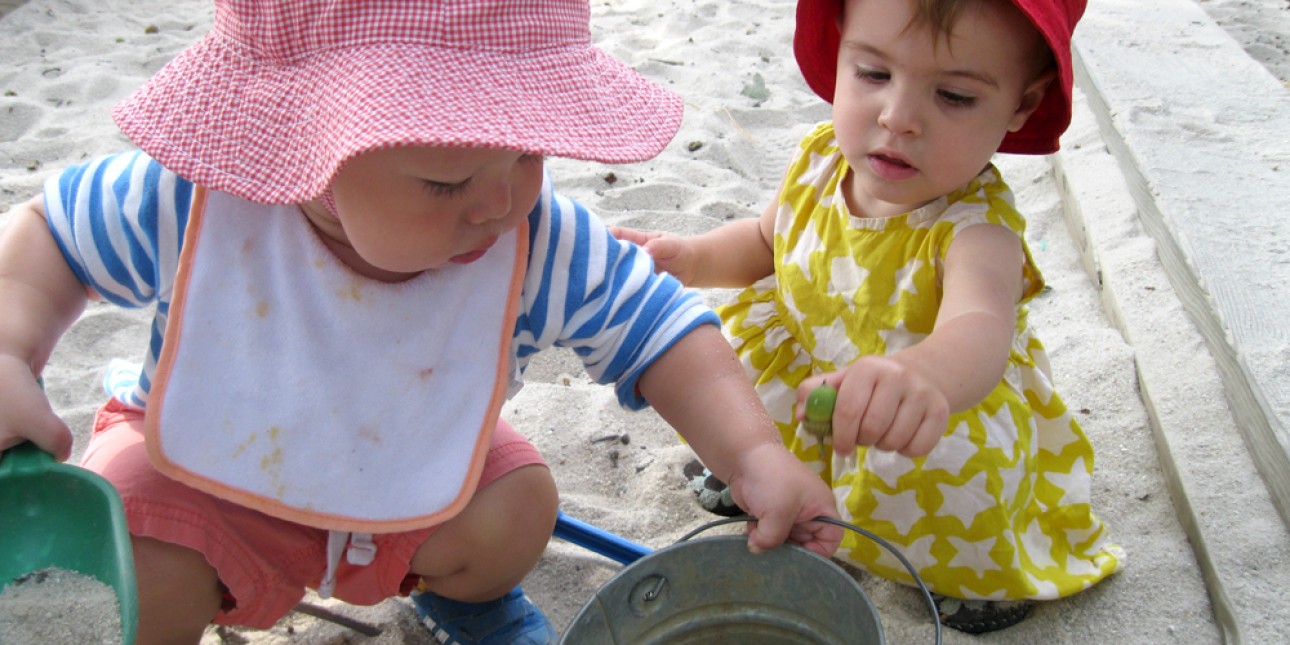In the Classroom: The Wild Things

More Sand Play
When our “tot lot” was under renovation recently, the Wild Things teachers discovered different and more creative ways to get everyone outside. We have been going on interesting neighborhood walks, playing in the Penn Alexander grassy areas, and spending time in the sandbox near the Magic Circle Nature Playground.
We’ve started taking a few children at a time out to play daily in the sandbox and have seen how much they enjoy it. Using the sandbox area has broadened the childrens’ sand play experience, as it is no longer limited to our classroom sensory table.
As a natural material, it is one of the easiest ways to allow for open-ended play, which is great for children of multiple ages. By having access to the sandbox, the children have (mostly!) enjoyed taking their shoes off and feeling the sand between their toes, filling buckets with sand using shovels and hands, and observing the older children from other classrooms play in the shared space.
Sand play easily integrates every aspect of a child’s development. Large and fine motor skills are used when children use shovels to dig and their fingers to pick up small objects, such as acorns and sticks. Mathematical and science concepts are developed when children fill and dump the sand using various tools and containers. Discoveries are made as children connect the sand in the sandbox with the sand they played in during their family vacation.
Sandboxes are also great for social development, as children negotiate the use of toys and space, and as they get older, engage in dramatic play, such as stirring a pot of sand and pretending it’s “soup”. And let’s not forget about “sand art”!
Continuing to incorporate sand play into the Wild Thing classroom curriculum is something we plan to do, especially after seeing how much the children enjoy it.